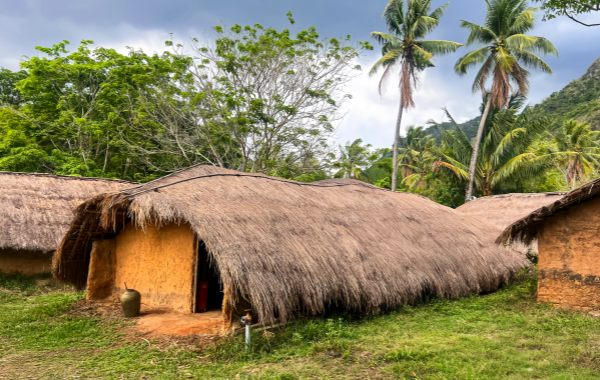Li
Introduction
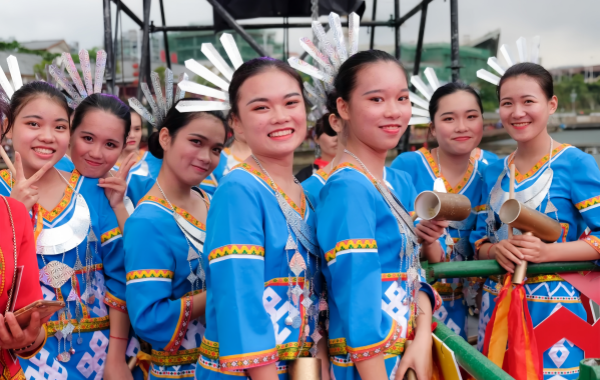
The Li Nationality is a unique and culturally rich ethnic group in China. Known for their long - standing traditions, exquisite handicrafts, and vibrant folk arts, the Li people have a history that dates back thousands of years. Their cultural heritage has been an integral part of the diverse cultural tapestry of China, attracting the attention of scholars and tourists alike.
 History
History
Origin
The ancestors of the Li people are believed to be the indigenous inhabitants of Hainan Island. Archaeological evidence suggests that they have been living on the island for a long time, with a history that can be traced back to the Neolithic Age. Over time, they gradually formed their own distinct ethnic identity through interactions with other ethnic groups in the surrounding areas.
Development
Historically, the Li people mainly engaged in agriculture, especially wet - rice cultivation in the low - lying areas and dry - rice farming in the mountainous regions. They also supplemented their livelihood by fishing, hunting, and gathering. The Li society had a relatively self - sufficient economic system, with a close - knit community structure. They developed their own social norms and customs, which were passed down from generation to generation.
Modern Times
In modern times, with the development of Hainan Province and increased interaction with the outside world, the Li people have experienced significant changes. The government has implemented various policies to promote economic development in Li - inhabited areas, improving infrastructure such as roads, electricity, and communication. Education and healthcare have also been greatly improved, raising the living standards of the Li people. At the same time, efforts have been made to preserve and promote Li culture, including language, traditional crafts, and folk arts.
 Population
Population
Quantity
As of the latest census data, the Li population in China is approximately 1.5 million, making them one of the smaller but culturally distinctive ethnic minorities in the country.
Distribution
The majority of the Li people live in Hainan Province, particularly in the central, southern, and southwestern mountainous regions. These areas have unique geographical and climatic conditions that have influenced the traditional lifestyle and cultural practices of the Li people. A small number of Li people have migrated to other parts of China for work or other reasons, contributing to the cultural exchange and integration.
 Economy
Economy
Traditionally, the Li economy was based on agriculture. Wet - rice cultivation was the main agricultural activity in the fertile valleys and plains, while dry - rice farming was practiced in the mountainous areas. The Li people also grew a variety of crops such as sweet potatoes, yams, and tropical fruits. Fishing played an important role in coastal Li communities, providing a source of protein and income. Hunting and gathering were supplementary activities, especially in the forested areas.
In modern times, the Li economy has diversified. Agriculture remains an important sector, but there has been an increase in the cultivation of cash crops such as rubber, coconut, and pepper. Tourism has become a significant industry in Hainan, and the unique Li culture and beautiful natural landscapes attract a large number of tourists. Many Li people are involved in the tourism industry, offering services such as accommodation, catering, and cultural performances. Handicrafts, including brocade weaving, bamboo and rattan weaving, and pottery making, are also important sources of income for some Li artisans.
 Culture
Culture
Language and Script
The Li language belongs to the Li branch of the Sino - Tibetan language family. It has several dialects, which vary from region to region. In the past, the Li people did not have a unified written script. In modern times, the Chinese government has helped develop a Li written language based on the Latin alphabet, which has facilitated the promotion of education and cultural transmission among the Li people.
Religious Beliefs
The Li people have a complex religious belief system. Ancestor worship is an important part of their religious life, and they believe that their ancestors have the power to protect and bless the family and the community. They also hold traditional natural beliefs, worshiping natural phenomena such as mountains, rivers, and the sun. Some Li people also follow elements of Buddhism and Taoism, which have been introduced to Hainan over the centuries. Religious activities are often closely related to festivals and important life events.
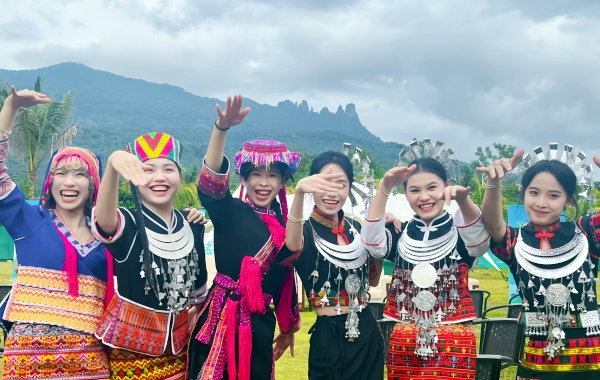 Clothing
Clothing
Traditional Li clothing is known for its bright colors and unique patterns. Women's clothing is particularly eye - catching, often featuring a short - sleeved blouse and a long skirt. The blouse is usually decorated with colorful embroidery, which often includes geometric patterns, floral designs, and animal motifs, symbolizing good luck and prosperity. Women also wear a variety of accessories such as silver earrings, necklaces, and bracelets, as well as a headscarf or a hat. Men's clothing is relatively simple, usually consisting of a short - sleeved shirt and long trousers, often made of plain or patterned cloth.
Literature
Li literature has a rich oral tradition, including folk tales, proverbs, and songs. Folk tales are passed down from generation to generation through oral storytelling, often featuring animals as characters and conveying moral lessons. Proverbs are an important part of Li wisdom, providing concise and insightful expressions of life experiences and social norms. Li songs cover a wide range of topics, such as love, labor, and nature, and are often sung during festivals and social gatherings.
Transportation
In the past, due to the mountainous terrain of Hainan, the Li people mainly relied on walking for transportation. In some areas, they used boats for river and coastal travel. In modern times, with the development of infrastructure, motorcycles, cars, and buses have become common means of transportation in Li - inhabited areas. However, in some remote mountainous villages, walking is still an important way of getting around.
 Science
Science
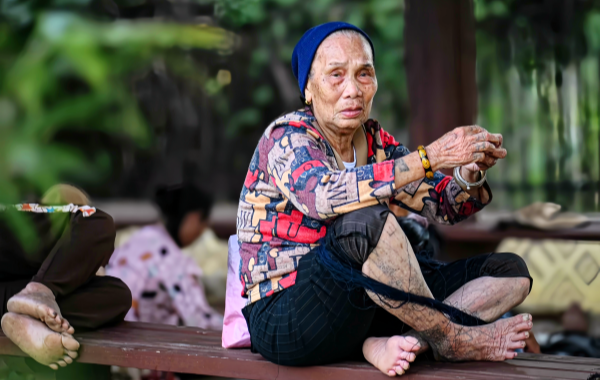 Medicine
Medicine
Traditional Li medicine has a long history and is based on the use of local herbs and plants. Li healers, known as "bomo," have extensive knowledge of the medicinal properties of various plants and use them to treat a wide range of diseases. Traditional Li medicine also emphasizes the balance between the body and the environment, and the use of natural remedies is often accompanied by rituals and prayers. In recent years, there has been growing interest in integrating traditional Li medicine with modern healthcare systems to provide more comprehensive medical services for the Li people.
Calendar
The Li people have their own traditional calendar, which is closely related to agricultural activities and natural phenomena. The calendar is used to determine the best times for planting, harvesting, and other agricultural tasks. It also marks important cultural events and festivals, helping the Li people to maintain their cultural traditions and sense of time. The traditional calendar is based on observations of the sun, moon, and stars, as well as the growth cycles of plants and the behavior of animals.
 Art
Art
Music
Li music is characterized by its lively rhythms and unique vocal styles. Folk songs are an important form of Li music, covering a wide range of topics such as love, labor, and nature. Traditional Li musical instruments include the "nose flute," a unique wind instrument played with the nose, and various types of drums and gongs. Li music often expresses the people's emotions and reflects their life experiences and cultural values. During festivals and celebrations, Li people gather together to sing and play music, creating a lively and festive atmosphere.
Dance
Li dance is energetic and expressive, with movements that are closely related to daily life and work. Traditional Li dances include the "Bamboo Pole Dance," which is a popular dance performed during festivals and social gatherings. In this dance, dancers jump between bamboo poles that are opened and closed rhythmically, showcasing their agility and coordination. Other dances imitate the movements of animals or depict scenes from daily life, such as farming and fishing. Dancers wear colorful costumes and perform with enthusiasm, bringing people together in a joyful and harmonious way.
Architecture
In the past, the Li people lived in "boat - shaped houses" in the low - lying areas and "stilted houses" in the mountainous regions. The boat - shaped houses were built on the ground and had a curved roof that resembled a boat, providing good protection against the wind and rain. The stilted houses were built on stilts, which helped to prevent flooding and keep away from insects and wild animals. These houses were usually made of wood and bamboo, with thatched or tiled roofs. In modern times, with the improvement of living standards, many Li people have moved into modern brick - and - concrete houses, but some traditional architectural elements are still preserved in some villages as a symbol of cultural heritage.
Landscape
The Li - inhabited areas in Hainan are characterized by beautiful tropical landscapes, including lush forests, clear rivers, and stunning beaches. The Wuzhishan Mountain, known as the "roof of Hainan," is a sacred place for the Li people and is surrounded by rich biodiversity. The tropical rainforests in Hainan provide a habitat for a wide range of plant and animal species, many of which are endemic to the region. The beautiful natural scenery has inspired Li artists and poets for generations, and it also serves as an important ecological resource for the development of tourism and other industries.
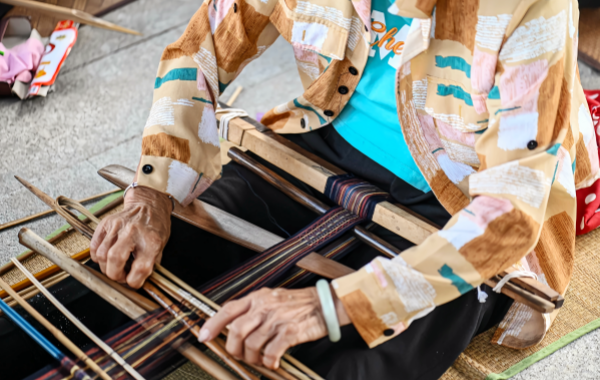 Arts and Crafts
Arts and Crafts
Li arts and crafts are renowned for their fine workmanship and unique designs. Traditional Li crafts include brocade weaving, bamboo and rattan weaving, and pottery making. Li brocade, also known as "Li Jin," is a famous handicraft that has a history of more than 3,000 years. It is made of colorful silk threads and features intricate patterns, often depicting scenes from nature, mythology, and daily life. Bamboo and rattan weaving products include baskets, mats, and furniture, which are known for their durability and practicality. Li pottery has a simple and rustic style, often decorated with natural patterns and symbols.
 Custom
Custom
Etiquette
Li etiquette is based on hospitality, respect, and politeness. When guests arrive at a Li home, they are usually greeted warmly with a smile and a handshake. The host will offer tea or wine to the guests, and it is customary to accept these offerings as a sign of respect. During meals, guests are often served the best food, and it is polite to praise the host's hospitality. The Li people also place great importance on greetings, and young people should show proper respect to elders by using formal titles and polite language.
Marriage Customs
Li marriage customs vary slightly from region to region but generally involve several steps. Marriages are often arranged by the families of the bride and groom, but the consent of the couple is also important. The engagement ceremony is an important step, during which the groom's family presents gifts to the bride's family. The wedding ceremony is a grand event that includes various traditional rituals, such as the bride and groom drinking from the same cup to symbolize their unity, and the exchange of gifts between the two families. The wedding feast is a time for family and friends to gather and celebrate, with music, dancing, and delicious food.
Festivals
The Li people celebrate many important festivals throughout the year. The "Sanyuesan" Festival is one of the most significant, which falls on the third day of the third lunar month. During the festival, people gather together to sing, dance, and engage in various cultural activities. They also visit temples to pray for good luck and a bountiful harvest. Other festivals include the "Dragon Boat Festival," the "Mid - Autumn Festival," and the "Spring Festival," which are celebrated in a similar way to the Han Chinese but with some unique Li customs and traditions.
Diet
Li cuisine is characterized by its fresh ingredients and unique flavors. Staple foods include rice, sweet potatoes, and yams. Common dishes include grilled fish, steamed seafood, and stir - fried vegetables. The Li people have a tradition of using local herbs and spices to flavor their food, giving it a distinct taste. They also like to drink tea and homemade wine, especially during festivals and social gatherings.
Funeral Customs
Li funeral customs are based on respect for the deceased and the belief in an afterlife. When a person dies, the family will hold a series of funeral rituals, including washing the body, dressing it in new clothes, and placing it in a coffin. Religious leaders or elders will perform prayers and rituals to guide the soul of the deceased to the afterlife. Family and friends will gather to pay their respects and offer condolences, and a funeral feast is held to honor the memory of the deceased. The mourning period varies depending on the relationship with the deceased, and relatives and friends will continue to offer support to the bereaved family during this time.
What Our Clients Say?
Based on 10,000+ traveler reviews






